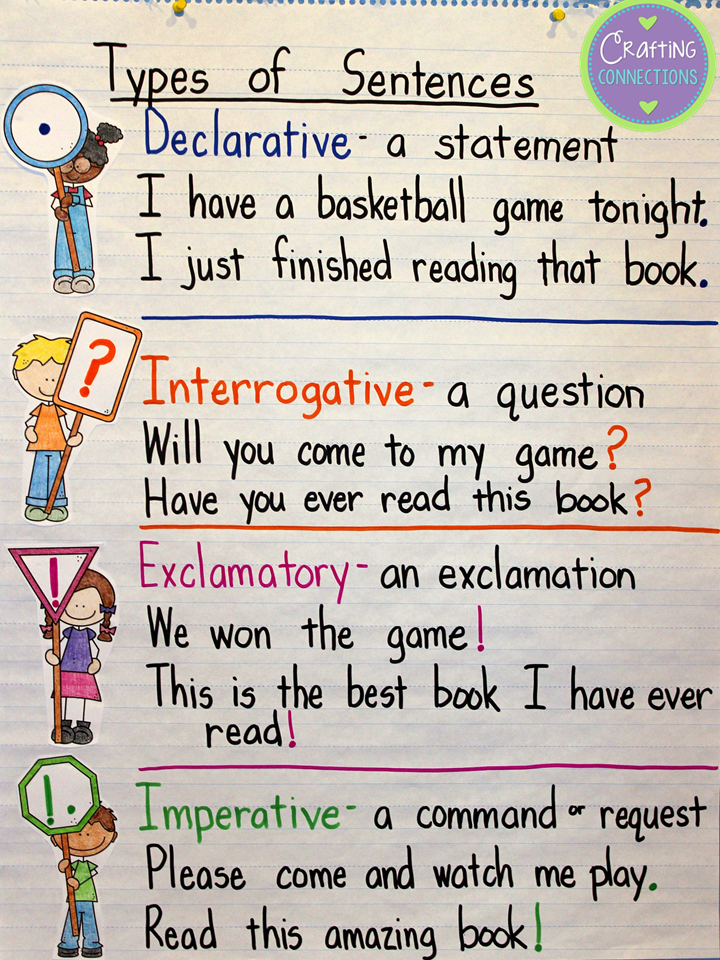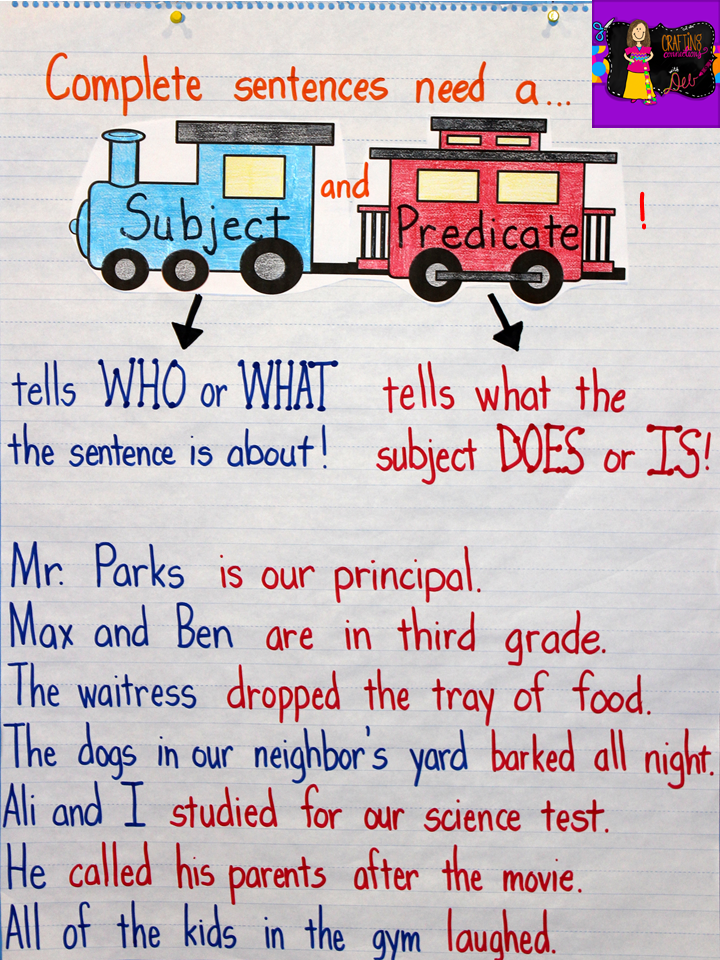BASIC SENTENCE STRUCTURE
The subject refers to someone or something (the subject contains at least one noun or pronoun). The simple subject usually contains a noun or pronoun and can include modifying words, phrases, or clauses.
The predicate refers to what the subject does or is (the predicate contains the verb or verbs). The simple predicate contains the verb and can also contain modifying words, phrases, or clauses.
In addition, there are other elements, contained within the subject or predicate, that add meaning or detail. These elements include the direct object, indirect object, and subject complement. All of these elements can be expanded and further combined into simple, compound, complex, or compound / complex sentences.
DIRECT OBJECT
The direct object receives the action of the sentence. The direct object is usually a noun or pronoun.
The man builds a house.
The man builds it.
INDIRECT OBJECT
The indirect object indicates to whom or for whom the action of the sentence is being done. The indirect object is usually a noun or pronoun.
The man builds his family a house.
The man builds them a house.
SUBJECT COMPLEMENT
A subject complement either renames or describes the subject, and therefore is usually a noun, pronoun, or adjective. Subject complements occur when there is a linking verb within the sentence (often a linking verb is a form of the verb to be).
The man is a good father. (father = noun which renames the subject)
The man seems kind. (kind = adjective which describes the subject)
Types of sentences
The simple sentence
A simple sentence is simple because it contains only one independent clause:
Justin dropped his Agricultural Economics class.
A simple sentence is not necessarily short or simple. It can be long and involved, with many parts and compound elements. But if there is only one independent clause, it is, nevertheless, a simple sentence. The following example has a single independent clause with a single subject (Justin) and a compound verb (gulped, swallowed, groaned, and decided):
Justin gulped down his fourth cup of coffee, swallowed a Tylenol for his pounding headache, groaned, and decided he would have to drop his Agricultural Economics class.
For more different kind of sentences check this link:
https://www.butte.edu/departments/cas/tipsheets/grammar/sentence_type.html
Watch the following video for more info on parts of the sentence.
* Taken from: https://www.butte.edu/departments/cas/tipsheets/grammar/sentence_structure.html
https://www.butte.edu/departments/cas/tipsheets/grammar/sentence_type.html
Now.. here we have types of sentences.
Exercises:
1. Visit the following link: http://grammar.ccc.commnet.edu/grammar/quizzes/bodyparts.htm and identify the different parts of the sentence.
2. Get the PDF .. copy and solve the exercise there..
Workshop:
A simple sentence is made up of only one independent clause. An independent clause is a group of words that contains a subject and a predicate and forms a complete thought when standing alone. In its most basic form the subject is the part of the sentence that contains the noun, and the predicate contains the verb.
The house is big.
The subject refers to someone or something (the subject contains at least one noun or pronoun). The simple subject usually contains a noun or pronoun and can include modifying words, phrases, or clauses.
The house
The predicate refers to what the subject does or is (the predicate contains the verb or verbs). The simple predicate contains the verb and can also contain modifying words, phrases, or clauses.
The bouse / is big.
In addition, there are other elements, contained within the subject or predicate, that add meaning or detail. These elements include the direct object, indirect object, and subject complement. All of these elements can be expanded and further combined into simple, compound, complex, or compound / complex sentences.
DIRECT OBJECT
The direct object receives the action of the sentence. The direct object is usually a noun or pronoun.
The man builds a house.
The man builds it.
INDIRECT OBJECT
The indirect object indicates to whom or for whom the action of the sentence is being done. The indirect object is usually a noun or pronoun.
The man builds his family a house.
The man builds them a house.
SUBJECT COMPLEMENT
A subject complement either renames or describes the subject, and therefore is usually a noun, pronoun, or adjective. Subject complements occur when there is a linking verb within the sentence (often a linking verb is a form of the verb to be).
The man is a good father. (father = noun which renames the subject)
The man seems kind. (kind = adjective which describes the subject)
Types of sentences
The simple sentence
A simple sentence is simple because it contains only one independent clause:
Justin dropped his Agricultural Economics class.
A simple sentence is not necessarily short or simple. It can be long and involved, with many parts and compound elements. But if there is only one independent clause, it is, nevertheless, a simple sentence. The following example has a single independent clause with a single subject (Justin) and a compound verb (gulped, swallowed, groaned, and decided):
Justin gulped down his fourth cup of coffee, swallowed a Tylenol for his pounding headache, groaned, and decided he would have to drop his Agricultural Economics class.
For more different kind of sentences check this link:
https://www.butte.edu/departments/cas/tipsheets/grammar/sentence_type.html
Watch the following video for more info on parts of the sentence.
* Taken from: https://www.butte.edu/departments/cas/tipsheets/grammar/sentence_structure.html
https://www.butte.edu/departments/cas/tipsheets/grammar/sentence_type.html
Now.. here we have types of sentences.
 |
| Taken from: http://crafting-connections.blogspot.com/2014/08/anchors-away-monday-8414-types-of.html |
Exercises:
1. Visit the following link: http://grammar.ccc.commnet.edu/grammar/quizzes/bodyparts.htm and identify the different parts of the sentence.
2. Get the PDF .. copy and solve the exercise there..
Workshop:
- Look for an article related to your field of expertise. Use Google, write key words related to a topic you want to read about. Add your article to your Scoop.it.
- Create a document and write about the article. Introduce the topic of the article. Make sure to add the link where you got it from. Write a short summary of the article. Say what it is about.Give your opinion about it.
- Find 5 examples of simple sentences in your article.
- Underline the subject and the predicate.
- Find different types of sentences in your article (use the poster above)


